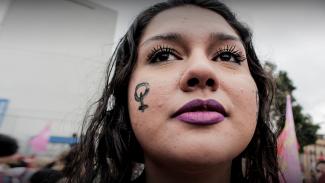These factsheets have been produced to help in understanding the dynamics around funding for womens rights activities.
They have been developed through a series of activities, including research and surveys of selected women's organisations worldwide. We hope that these factsheets will create a space for dialogue between donors and organsiations in resource mobilisation.
The State of Women’s Organisations
What is the state of women’s organizations? Who funds women’s rights work? What dynamics are shaping the growth of women’s organizations?
Bi-lateral and Multi-lateral Development Agencies
Bi-lateral and multi-lateral development agencies deliver development programmes as well as grants. They transfer public monies in the form of Official Development Assistance (ODA), mostly in direct funding from donor government to developing country government. While ODA is still a significant source of funds for gender equality, it is still a tiny proportion of overall ODA.
International Non-Governmental Organizations (INGOs)
International NGOs (INGO) are large-scale non-profit development and human rights organizations that generally operate from multiple offices throughout the world, funded by individuals, governments and/or other foundations. The largest INGOs have incomes greater than many bilateral donors, are active in more countries and are at least as influential in commanding public and political attention. INGOs play a significant role in supporting women’s rights.
Women's Funds
More than twenty public funds led by women explicitly support women’s organizations in the Global South. Part of a growing movement of social justice philanthropy, the women’s funds are, according to AWID data, an essential source of finance for women’s movements throughout the world. New women’s funds join the list every year, including funds in the making in the Middle East, the Magreb and Argentina.
Large, Private Foundations
Of all the funding sectors that AWID monitors, the large private foundations currently create the fewest opportunities for women’s rights organizations and movements worldwide. Gender equality is not high on their agendas, and their funding mechanisms are shifting in ways that inhibit access by most women’s rights organizations.
Individual Giving and Small Private Foundations
There is considerable potential for women’s rights organizations and movements to build resources from individuals. Small donations from individuals or membership fees contribute to greater sustainability and independence, and help to leverage funding from institutional donors.
Corporate Philanthropy
Corporations remain the most controversial source of funds, with a reputation as “the sleaziest corner of philanthropy”. Only 2% of AWID survey respondents2 mentioned the private sector as a source of revenue (up from 1% in 2000), and funding from business or corporations accounts for less than 1% of combined revenue of respondents.
